What is Mindfulness?
Mindfulness is our capacity to be aware, right here, now. We all have this ability naturally. Look at a child playing and see how attentive they are; how curious, enraptured, fully engaging in the present moment. As we get older, our tendency is to develop the habit of getting ‘lost’ in the story in our head, ruminating about the past / planning for the future.
This continuous stream of thinking that we are totally identified with and believe to be ‘real’ makes us overlook and dis-regard the endless possibility and power of the present moment.
It is also exhausting as we are continuously been driven unconsciously, by the ‘to do list’ and the thoughts about ‘what I must get done today’. Many people come to Mindfulness Training “to switch off the voice in their heads” or at least to learn how to get some rest from it.
How do we develop mindfulness?
We can learn to be mindful again instead of experiencing every moment through ‘the veil of thought’. Mindfulness is about practicing staying present and noticing what arises moment by moment.
Meditation is how we cultivate the progressive quietening of the mind. We can integrate ‘pauses’ and short ‘awareness’ prompts into our daily life. Mindfulness is really just being aware of what we are doing while we are doing it. Aware of ‘thinking occurring’ when we are thinking. Aware of feelings arising as they are.
Is mindfulness the same as living in the moment?
Yes, when we are Mindful, we stay with ourselves and our experience as it unfolds, moment by moment. And this awareness has the quality of kindness, curiosity, openness and acceptance.
Perceiving with all of the senses (sounds around, the touch of the air on our face, the taste in your mouth) takes our attention out of the stream of thinking. We open up to recognise that we are more than our thoughts or feelings. Awareness or Mindfulness is our natural ability to be aware of or hold thoughts, feelings, sounds, how our body feels, the environment etc… without being driven by these.
We step back and observe reality just as it is, no more, no less. We see our mind’s habit of creating stories about how reality should be that make us suffer when our expectations are not met. When we are mindful, we suspend re-activity and begin to see and accept reality as it is.
Why is the research so compelling?
Less stress, worry, negativity. Better focus, work, sleep. More health, fun and happiness
Overwhelming Mindfulness Research evidence shows that mindfulness boosts the immune system, intelligence, positive emotional states, self awareness, creativity, happiness, compassion and more…
Rather than worrying about what has happened or might happen, when we are ‘present’ (or Mindful) we deal with whatever is happening. As we become more skilled at managing our state of mind and emotional states, we gain resilience. Then, we are empowered to use our minds effectively instead of our minds running us ragged!
We start to see things as they really are (instead of how we imagine them to be through the filter of our story and habitual patterns), so can respond effectively and appreciate more fully.
This simple 3 minute clip briefly describes what Mindfulness is, benefits and contexts.
Why does it make sense?
As well as all the benefits to mental and physical health, when we are present and live mindfully, we get past the ‘noise’ in our heads and begin to experience life more deeply; see that the small things we tend to ignore aren’t small after all.
… Whether it is the sound of our child’s voice or the smell of freshly cut grass, a tree in bloom, the warmth of an embrace, or a smile /gesture of kindness from a stranger…we notice and savour the sublime in the most ordinary moments of each day …. the precious moments that make up our whole life.
How do we do it?
Mindfulness is always available to us, every single moment – we just have to remember. Breaking the habit of being engrossed and fully identified with ‘thought and thinking’ and coming into awareness takes practice. We need to give the mind a focus, something to pay attention to. Here are some simple practices that you can integrate into everyday life to help you develop Mindfulness.
- 3 Mindful Breaths – anytime – anyplace – anywhere
 By giving all of our attention to the breath we can calm and still the mind. The breath is always with us, but mostly we don’t notice it. By purposely, moving our attention to our breath we come into the present moment, re-connect with ourselves and start afresh.
By giving all of our attention to the breath we can calm and still the mind. The breath is always with us, but mostly we don’t notice it. By purposely, moving our attention to our breath we come into the present moment, re-connect with ourselves and start afresh.
- Notice how your body feels – anytime – anyplace – anywhere
Can you feel your hands? the air against your face? get a sense of your feet on the floor. Purposefully, notice how your body feels from the inside. Move your focus of attention to different parts of your body. Your body is always present in the here and now.
- Choose one routine activity that you will do mindfully
 It may be washing your hands or walking to the bathroom or drinking a cup of tea. It can even be sitting at traffic lights. But, make a decision to choose one activity that you will REMEMBER to wake up for and do it consciously – aware of sense perceptions, sights/sounds/touch/smell/taste…
It may be washing your hands or walking to the bathroom or drinking a cup of tea. It can even be sitting at traffic lights. But, make a decision to choose one activity that you will REMEMBER to wake up for and do it consciously – aware of sense perceptions, sights/sounds/touch/smell/taste…
Here is a short clip from John Kabat Zinn:
What is the background and research evidence?
Though it has its roots in Buddhist meditation, the secular practice of mindfulness is now mainstream. This is in part, through the work of Jon Kabat-Zinn and the Mindfulness-Based Stress Reduction (MBSR) program, which he launched in Massachusetts Medical School in 1979. Since then, thousands of studies have documented the physical and mental health benefits of mindfulness in general and MBSR in particular, inspiring countless programs to adapt the MBSR model for a wide variety of contexts like schools, prisons, hospitals, workplaces and beyond.
“When you are present in this moment, you break the continuity of your story, of past and future. Then true intelligence arises, and also love.”
- Eckhart Tolle
What is Meditation
Meditation just means awareness. So, whatever you do with awareness is meditation. However, we usually use the word to describe time set aside for non-doing to develop the skill of ‘paying attention’.
This paying attention to our inner and outer world with acceptance, patience and compassion, often called ‘coming home to self’ cultivates a progressive quietening of the mind.
The wandering and distractibility of mind that is most peoples’ default position produces stress, fear, anxiety and worry. Meditation practice encourages the development of concentration, clarity, emotional positivity, and a calm seeing of the true nature of present moment reality.
What is Meditation? develops awareness and clear seeing
You learn the patterns and habits of your mind, and cultivate new, more positive ways of being. The purpose of meditation is to develop and cultivate openhearted spacious awareness as well as a correct understanding of reality.
What is Meditation – Just Being Here – Aware
Jon Kabat Zinn prefers a broader description of meditation as …Living Your Life As If It Really Matters… That means being here for it, with Awareness and with a certain degree of self kindness towards oneself and with an understanding of the deep inter-connectedness of all life and of all beings.
Understanding doesn’t come from the intellect but, it comes from directly connecting with the totality of your being. Generally we waste our lives, distracted from our true selves, in endless activity.
What are some tips to make your life a living meditation?
Meditation is not a doing but a ‘falling awake’. So, like ‘falling asleep’, we have to set the scene to induce this clarity of being. For many, participating in a Mindfulness Course gets them on track. For others,
- Taking a walk in nature
- Allowing time regularly for silence and spaciousness
- Sitting on the porch and looking at the sky
may be helpful to cultivate mindfulness. Whatever, easily reminds you to stop running, come home to yourself, live from your heart attuned to your own wisdom. Then like changing the channel on the TV, switch your attention from ‘thinking’ to sensing – really looking, listening, feeling, smelling, tasting. Whenever you notice that your mind has wandered back to thinking (which it will do), gently switch back to sensing. A good way to understand what meditation is, is to try a: guided mindfulness meditation.
“If there is no meditation then you are like a blind man in a world of great beauty, light and colour.”
- Krishnamurti
What is Compassion?
Compassion is the most transforming energy in the universe with everything we all deeply long for – kindness, caring, loving. It is a courageous state of mind and heart, with far-reaching consequences in terms of how we experience ourselves and reality…
More specifically, compassion is the feeling of concern that arises when we encounter pain and suffering, our own as well as others. It involves the motivation to relieve this suffering and is natural in everyone but for many reasons often not cultivated. One can feel compassion without acting on it.
"If you want others to be happy practice compassion. If you want to be happy practice compassion"
- Dalai Lama
Why does compassion matter?
Not only is compassion vital for our survival as a species, it is also positively correlated with better health, wellbeing and happiness. When we feel compassion, our heart rate slows down, we secrete the “bonding hormone” oxytocin, and regions of our brain linked to empathy, caregiving, and feelings of pleasure light up, which can result in our wanting to approach and care for other people.
Interested in compassion training, check out our Mindful Self Compassion Course
A video where Krista Tippett inspires us to reconnect with our intrinsic compassion.
Does research supports its value?
Recent scientific research on happiness and brain function suggests that compassion results in the same kinds of brain activity that are shown when someone is in a particularly strong state of wellbeing and happiness. Meditators have long known experientially that feelings of love and compassion are accompanied by feelings of happiness, wellbeing, and even of bliss, but now science provides the proof.
Functional magnetic resonance imaging (fMRI) scans, which image where different emotional states take place in the brain were placed on experienced meditators as they generated strong feelings of compassion. What the scans showed, was a strong increase in activity in the left side of the prefrontal cortex (where positive emotions – happiness, confidence take place) and a decrease in activity on the right side (where negative states – anxiety, depression take place).
Growing research now also shows that being compassionate improves health, well-being, relationships and sense of purpose.
Can compassion be developed?
- Strengthens brain circuits for pleasure and reward and leads to lasting increases in self-reported happiness
- Reduces risk of heart disease by boosting the positive effects of the vagus nerve
- Makes people more resilient to stress; lowers stress hormones in the blood and saliva
- Boosts the immune response
- Increases Positive emotion, decreases rumination
- Decreases negative emotions such as: hatred, jealousy, anger
- Enhances communication and connection with others so better relationships
- More compassionate people / parents / workers / societies have better social skills, take care of their most vulnerable members, assist other nations in need, and perform more acts of kindness.
A video where Jon Kabat-Zinn says Mindfulness and Compassion go together.
Here is feedback from a client who engaged in the Mindful Self Compassion Course
“The course has made a ‘huge positive difference’. Every area of my life has changed dramatically for the better. I just cannot put into words how beneficial the course has been. I loved the emphasis on compassion. The facilitator was superb. Highly recommend!”
“There is no need for temples, no need for complicated philosophy. Our own brain, our own heart is our temple; my philosophy is kindness.”
– The Dalai Lama
Like to know more about Mindfulness, Meditation and Compassion?
Talk to Joanne to discuss your particular needs and objectives

